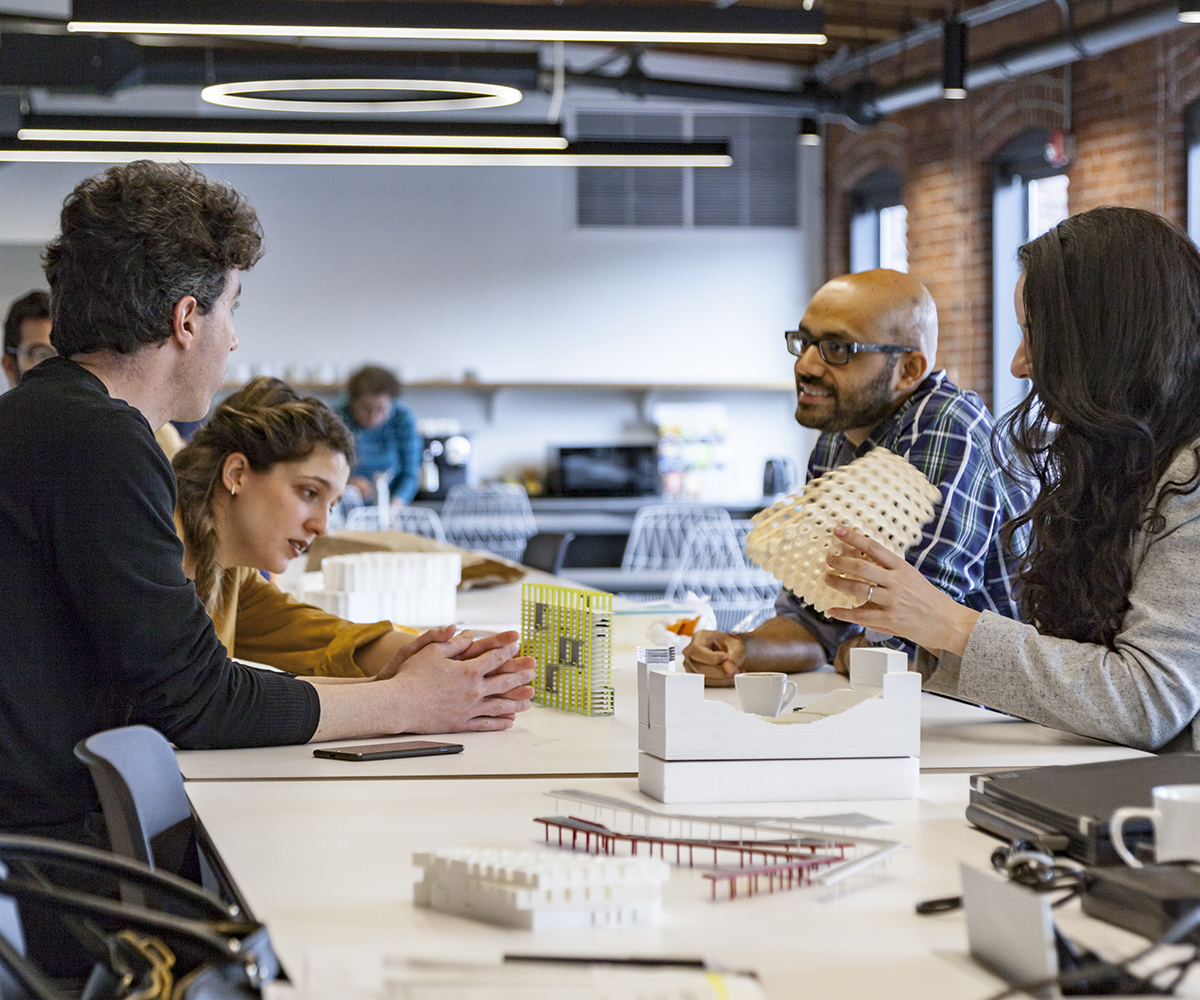April 10, 2018
New Incubator at Sasaki Profiled in the Friedman File
How firms are incubating the future of design
The A/E/C industry can get knocked for being inwardly focused, slow to change and not offering enough room to experiment and innovate. In a fast-moving world that is increasingly populated by Googles, Amazons and other disrupters, that is not a recipe for growth!
In this issue of The Friedman File, we’re sharing how forward-thinking multidisciplinary firms are turning that old stereotype on its head, using incubator models to transform their businesses, impact their communities and attract young creative thinkers.
[photo] Designers gather in the new Incubator at Sasaki 5,000 SF space to examine the latest outputs from the Sasaki fabrication studio and model shop, which is equipped with a new CNC router and 3D printers.

A physical space focused on new solutions
Sasaki (Watertown, MA) has a history of design research, community involvement and collaboration. Its new 5,000 square-foot Incubator at Sasaki, which opens this month at the firm’s 100,000 square-foot campus in a former mill complex, is pushing into the future.
The Incubator is essentially a socially-minded co-working space that aims to bring people together to solve big societal challenges and create more sustainable communities. The physical space looks like a startup: inviting open space with natural light, brick walls and colorful furniture combined with multipurpose spaces and conference rooms.
It’s curated by the Sasaki Foundation, a separate 501(c)(3) organization that has been funding research grants and university design programs for over a decade. With the Incubator, the Foundation seeks to invest in ideas that bring together civic leaders, educators, economists, designers and technologists to tackle complex challenges, such as social equity, mobility and climate change. The aim is to create an ecosystem of innovation that leverages the resources of a global design firm and Boston’s network of talent, says Executive Director Alexandra Lee.
Blurring the lines between design practice, academia and community is part of Sasaki’s culture. Young designers are eager to do more of that work, and the Incubator extends that energy, says James Miner, Managing Principal. For example, as a side project, two Sasaki designers teamed up with the Boston Society of Landscape Architects (BSLA) to create the award-winning Kit of Parks, a mobile collection of modular pieces created in Sasaki’s fabrication lab that are arranged to make a “pop-up” neighborhood park. Now, the resources of the Foundation and the Incubator will allow designers to team with outside partners and tackle new, larger-scale research.
It also allows the firm and the foundation to build on and share their research on topics ranging from the impact of autonomous vehicles on the physical needs of communities, to the role of data visualization in urban planning. A call for research proposals on the theme of resilience in the built environment will be issued in June.
Luring and retaining millennial and Gen Z talent is a concern for many firms, and Sasaki sees its Incubator as an attractive prospect. In fact, applicants to the firm’s competitive internship program were excited by the space on a recent tour, says Lee.
It also helps further the firm’s commitment to equity, diversity and access in the profession by inviting varied groups to be involved. Lee, in her first six months as the Foundation’s first director, has been building alliances with area universities, community groups, nonprofits, municipalities and businesses, such as working with MIT’s SOLVE global research program to present its scholars’ work on sustainable urban communities.
On Martin Luther King Day, Sasaki hosted 40 people at a pro-bono design charrette for [G]Code House, a living-learning coding school for women of color in Roxbury, Massachusetts. Boston Public Schools students recently visited to meet with Sasaki professionals and learn more about design careers.
The Roxbury [G]Code House is one example of how design and workforce development can come together, says Lee. Many Sasaki employees have ties to universities, so a graduate research program where students present, work on and test ideas at the Incubator is another possibility.
Funding will evolve as the space itself evolves. Lee expects that, too, will be a collaborative effort, with funding for activities coming from within the A/E/C industry, larger foundations, community partners, municipalities and academia.
“Sasaki believes that design is an underutilized resource. There is no reason why we shouldn’t be using a design mindset to solve larger problems that extend beyond the traditional bounds of design,” says Lee. “Design is all about solving problems and Sasaki is all about working with different perspectives, so this is a natural extension of the practice.”
